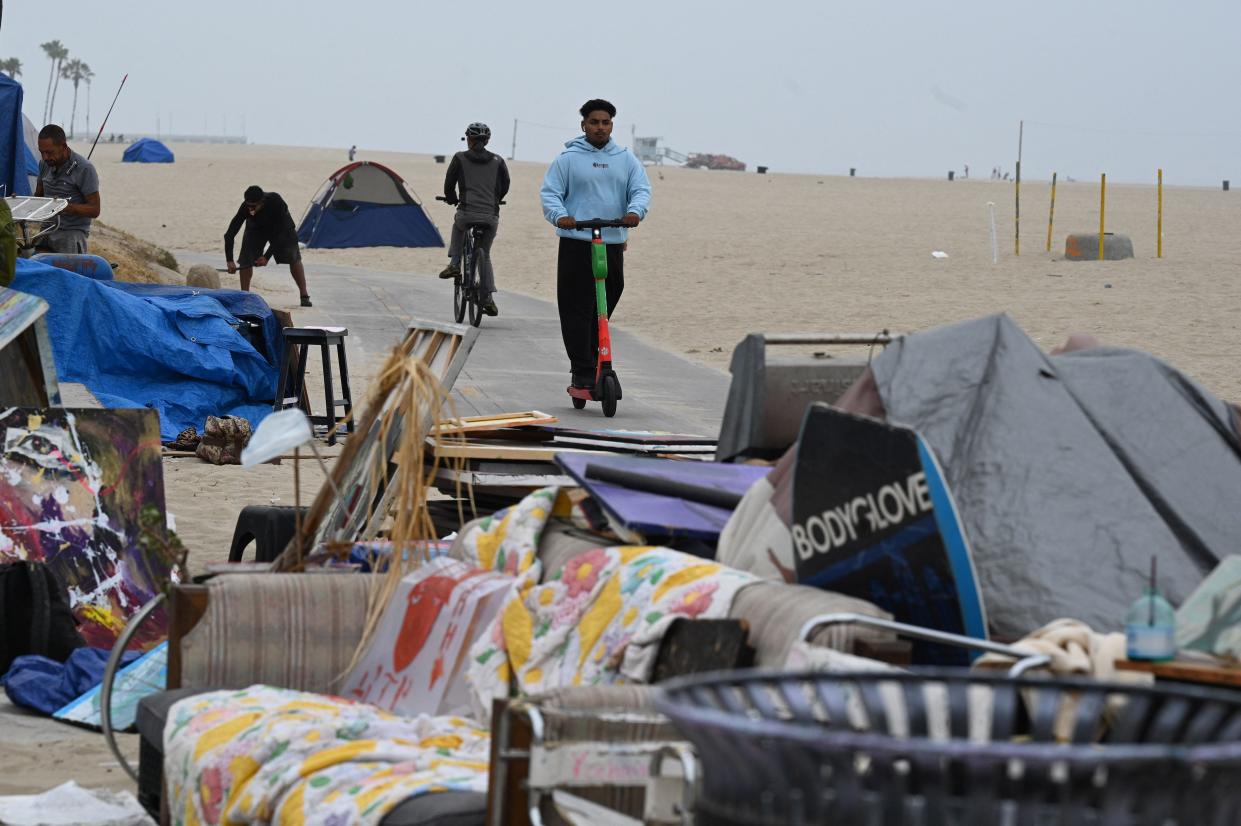Los Angeles criminalizes being homeless in almost every area of city with new ordinance

- Oops!Something went wrong.Please try again later.
Imagine a map of a city. The cut from it all private property, as well as any space on a public sidewalk, within 500 feet of a school, day care, park, or library. Subtract as well any place within 5 feet from a building entrance or exit, 10 feet from a loading dock or driveway, 500 feet of an overpass, underpass, freeway ramp, tunnel, bridge, bike path, or subway.
What little spaces remain, if anything, are now the few remaining places where it is legal to be homeless in Los Angeles, after mayor Eric Garcetti signed a sweeping new rule on Thursday making it illegal for unhoused people to be in most all places across the city.
LA has more than 66,000 homeless people as of the last citywide count, a 12.7 per cent increase over the previous year, and those people will now face citations, fines, or misdemeanor charges for lacking a home in public.
The Los Angeles City Council approved the measure 13-2 earlier this week.
"That’s what it comes down to for me ... where can people go, where can people sleep when they do not have an alternative," council member Mike Bonin said in the meeting where they approved the ordinance.
Mr Bonin was once unhoused himself, and fretted that the city only has shelter capacity to house about 39 per cent of its unhoused population any given night.
“What about the other 61%?" Mr Bonin asked. "Some of those nights I slept in the car, some of those nights, when my car was in the shop, I slept on the beach. I cannot tell you how much turmoil is in your heart when the sun is setting and you don’t know where to sleep.”
Backers of the measure say it doesn’t criminalise homelessness, but rather regulates homeless encampments that have proliferated in the city in recent years, while minimizing law enforcement contact with this vulnerable population.
"This ordinance first of all does not make homelessness illegal,” Councilman Paul Krekorian said earlier this month. “It does not make any conduct that is fundamental to being human illegal. What it does do is it guarantees that we will reestablish passable sidewalks. It protects the users of our public infrastructure and the unhoused residents of our city from being put into positions of interaction with automobiles, around loading docks, driveways and so forth. It guarantees access to our fire hydrants, entrances to buildings.’’
Housing activists have criticised the city’s spending priorities. The 2021 fiscal year budget, which began on 1 July, spends nearly $2 billion on the Los Angeles police, while dedicating less than $1 billion to homelessness.
“Austerity is a political choice. 5 people a day dying on the streets is a political choice. The homelessness crisis In Los Angeles is a direct result of electeds underfunding housing and services, and instead criminalizing homelessness & give $3 billion to LAPD to enforce it,” the People’s City Council, an activist group, wrote on Twitter following the new ordinance.
According to a recent UCLA report, the roots of LA’s homelessness crisis are deep and date back to the years following WWII, when housing construction began to fall behind population growth. From there, a confluence of racist zoning, tough on crime laws, state cuts to mental health services, and other factors have led to LA’s current unhoused crisis, which has hit Black and Latino communities particularly hard.
The Independent has reached out to Mayor Garcetti for comment.

